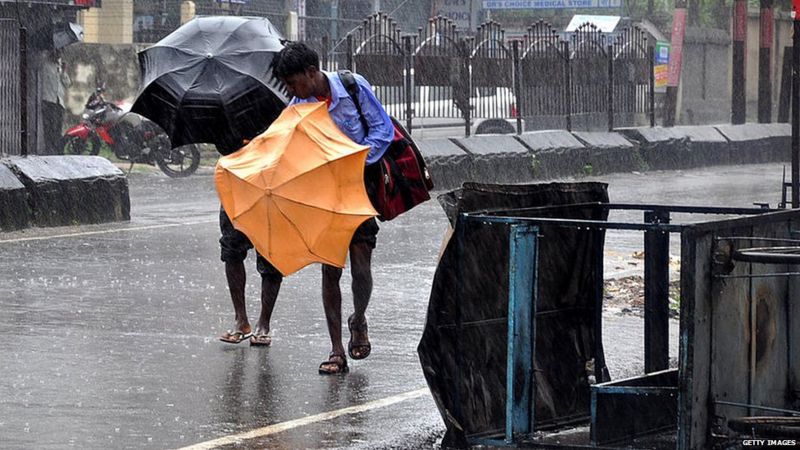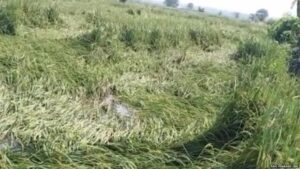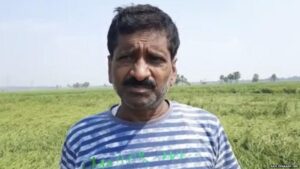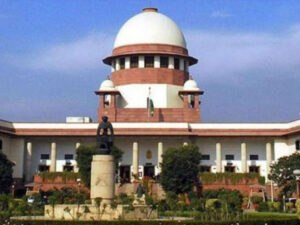
‘Phule Kans gross Mahi Chhai, Jimmy Varsha Ritu manifested old age.’ This famous couplet of Goswami Tulsidas means that if the Kansas flower blooms on the earth, then it is a symbol of old age of the rainy season. He had written these lines centuries ago in ‘Ramcharitmanas’. Since then this couplet has been discussed. Examples of this have been given, but in Jharkhand in the last few years, its significance seems to be ending.
Now the white flowers of Kansas bloom, but even after that the rain comes as if it is in its youth. Due to this the crops get ruined. Floods come and people have problems.
The cyclonic rains in the second and third weeks of October this year have again challenged the relevance of this couplet. It is a coincidence that just a few days before the people of Jharkhand were facing this unseasonal rain, a report of the Government of India (Climate Vulnerability Assessment for Adaptation Planning in India) revealed that due to climate change. Jharkhand is one of the most vulnerable states of India in terms of the side effects caused.
Scholars from the Indian Institute of Science, Bangalore and the Indian Institute of Technology (IIT) Guwahati and IIT Mandi were involved in this research. A few years ago, the Jharkhand government also made its action plan public by preparing such a report (Jharkhand Action Plan on Climate Change).
Although all the 24 districts here are affected, but Sahibganj and Pakur districts are at number one and second place respectively in the vulnerability index. These districts have faced floods twice this year. In the last years, there was severe drought in these districts.

According to environmentalist Dr. Nitish Priyadarshi, this is the result of climate change. He has recently written the standard book ‘Climate Change in Jharkhand’. He has also done separate research on the effects of climate change in Pakur district.
Talking to the BBC, he said, “Global climate change is having a bad effect in Pakur. If you study the weather of the last 25 years, you will find that people here are prone to droughts, cyclonic rains, floods, soil erosion and thunderstorms. The weather cycle has changed. In summer the temperature is reaching 44 degree Celsius, then in winter the mercury comes down to 5-6 degree Celsius. Crops are getting ready before time, sometimes new- Due to the infestation of new pests, agriculture work has been badly affected.

Along with this, food security, education and rural livelihoods are being affected. Due to this, people are migrating to neighboring states like Bengal in search of work in 2-3 months of summer. Then they also take children with them. This affects their education. In the months of May-June, due to this, only old people and cattle are seen in the villages because then the ground water level in this area goes down drastically and due to drought farming is not possible. Rivers and ponds dry up.
- farmers’ problems
Devpur is a Village in Hiranpur Block of Pakur District. The cyclonic rain here during Navratri ruined the paddy crop growing in the fields. There used to be no such rain earlier in this season. This time even in the third week of October, there was more rain than normal.
Mangal Mandal, who lives here, says, “We had cultivated paddy in 15 bighas. This year there was good rain in the rainy season, so the mind was happy to see the crop. Now after Durga Puja, there is such a strong storm and water. Came that the whole crop fell in the field itself. There was water and the crop got ruined. I had done farming by taking loan. Now if I don’t get compensation from the government, then how will I do other farming. Now there is maximum risk in farming, But we cannot do any other work.

Similar is the story of Rajkumar Sah of Hiranpur. He had also planted paddy in 16 bighas. The cyclonic storm and unseasonal rains also ruined their agriculture. He told the BBC that in the last two years, the reason for the drought was a lot of problems in irrigation. It took a lot of money. The crop was also not that good and this year the crop was ruined by the cyclonic storm.

- impact on the biodiversity of the area
Environmentalist Dr. Nitish Priyadarshi says that climate change has also affected biodiversity. Medicinal plants like Sarpagandha, Dhami, Kajwa, Chiraita, which are easily available in the forests of Pakur district, which are rich in Santhal and Paharia tribals, have started disappearing. Along with this, the main sources of income of the tribals, Mahua and Sal trees have also decreased. They are starting to dry up.
Dr. Ranjit Kumar Singh, Assistant Professor of Geology in Sahibganj College also agrees with this. He said that districts like Sahibganj and Pakur, which are situated at the foothills of Rajmahal hills, have already been witness to the effects of climate change.
Dr. Singh says, “Thousands of years ago, the fossils found here bear testimony to the damage caused by volcanic eruptions in these hills. From the research so far, it has been clear that on the hills of Rajmahal. Plants from the dinosaur age were found, which were destroyed in volcanic eruptions. Now there is a lot of plant fossils under and above the earth. Due to this the government has also created a fossil park in the village of Mandro.
Due to climate change, people are getting different types of diseases. Diseases like dengue, brain malaria, diarrhea are now happening in abundance. Due to this the population of the people of Paharia tribe has decreased rapidly. They are almost extinct.

- Impact on the poor and tribals
Senior journalists from Pakur, Ramprasad Sinha and Sanjeev Dutta, believe that due to climate change, the livelihood of the poor and tribals is being affected. In Pakur district, which is famous for black stone, there is mining of coal as well as coal and ceramics in Sahibganj adjacent to it. Due to this, hundreds of families were displaced and the traditional forest area has also decreased. Due to this the tribals had to settle away from their villages and forests and they also migrated. They are not getting the natural environment in which they have been accustomed to live for hundreds of years. The increasing heat due to climate change is also bothering them more.
Due to open cast mining, such people are getting sick due to dust particles and waste and change in weather. Their average age is decreasing. This is a major reason for the rapid decline in the number of Paharia tribals.
- condition of whole jharkhand
According to the recent Government of India report on climate change, apart from Pakur and Sahibganj, Jharkhand’s Chatra, Garhwa, Palamu, Giridih, Hazaribagh, Bokaro, Khunti and Godda districts are the most vulnerable (high vulnerability rate) districts in this regard. However, in different reports released over the years, some other districts of the state such as West Singhbhum were also considered as highly vulnerable.
Due to western disturbances in the Bay of Bengal this year, people faced cyclonic rains and storms in almost all the districts including state capital Ranchi. The crops were badly affected by this. It rained more than normal, but due to its uneven distribution, the loss was more than the benefit. Along with this there was an increase in the incidents of thunderstorms. Due to this many people and cattle lost their lives.






